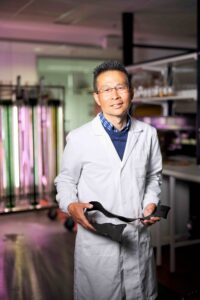Scientists from Flinders University have discovered rich anti-aging properties in South Australian brown seaweed that significantly increase collagen levels in the skin and protect against the deterioration of both collagen and elastin.

"We found that extracts from South Australian brown seaweed have huge potential to be used to help slow the effects of aging on our skin," says Professor Wei Zhang, College of Medicine and Public Health.
"Collagen acts as a building block for bones, teeth, muscles, skin, joints and connective tissue, while elastin gives skin its elasticity and strength - and both these proteins are popularly promoted by the beauty industry as essential for the appearance of healthy skin," he says.
Professor Zhang explains the Flinders team has found that extracts from SA's brown seaweed not only stimulated the growth of collagen, but also inhibited a process called glycation, which leads to the deterioration of collagen and elastin.
"So far anti-glycation agents haven't been strong enough to have a major impact on anti-aging, so our discovery is really exciting as we can see the potential to develop stronger anti-glycation extracts from brown seaweed."
The study evaluated the anti-aging qualities of extracts from three South Australian seaweeds - Ecklonia radiata, Cystophora moniliformis, and Cystophora siliquosa - that were collected from freshly deposited beach-cast seaweeds in Rivoli Bay, Beachport, South Australia.
South Australia has a world-recorded highest diversity of seaweeds, with up to 1500 described species, of which approximately 62% are endemic to the region.
"Seaweed is a great source of multiple bioactive ingredients with potential applications in natural health and skincare products.






